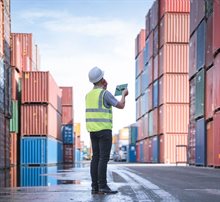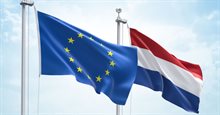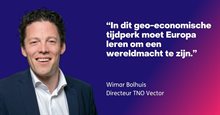Unlike the usual straightforward analyses of suppliers and their countries of origin, TNO has dived deeper into the supply chain. This methodology doesn’t just look at the suppliers of import products themselves, but also at their suppliers and their suppliers’ suppliers. The analysis thus goes two levels deeper. Doing so makes sense since a break in any of these links in the chain will interrupt the final delivery. In policy jargon, this is referred to as ‘strategic chain dependency’. In the wake of shortages of face masks, medicines, and natural gas, both the Dutch national government and the EU are developing an approach to make us less susceptible to – and surprised by – supply interruptions.
Production dependency in figures
TNO summarises the risks using two indicators. First, the so-called HHI indicator (Herfindahl-Hirschman Index) shows how concentrated the production of the import product is. Second, there is the World Governance Index (WGI) indicator, which was developed by the World Bank to reflect the quality of a country’s governance. How those indicators work together is easy to understand using two extremes. If a product or raw material is sourced from a single country with an unstable regime, the risk of disruption (due to political, logistical, or operational decisions) is relatively high. If, on the other hand, production is spread across a number of stable countries, imports are unlikely to stagnate.
‘Some other methodologies are a lot more complicated and therefore more challenging to understand. We can determine these two indicators using public data. They’re also transparent and recognisable to policymakers and the business community. Together, they offer a nuanced approach to assessing risks in chains.’ - Ton Bastein, researcher at TNO Vector
Analysis
With its methodology, TNO is also conducting a qualitative analysis of those risks. How important are the products, where are they made, and where do the raw materials originate? Researcher and co-author Elmer Rietveld: ‘Such an analysis requires guts because you have to make choices. Which products matter and for which sector? Which are less important? What do the chains look like and, above all, what are our current blind spots? These questions are important for decision-makers because they have to make policy or decide for their companies how they are going to reduce risks, for example by organising their supply chains differently. They also need to know how much time the measure they would like to implement will take, because their lead times partly determine the validity of their decisions. Ultimately, the aim of this methodology is to get public authorities and industry to make investments that truly enhance the security of supply.’
Although strategic chain dependency is now mainly viewed from an EU perspective, the Netherlands has a clear say in the matter. Therefore, after looking at and analysing the figures, the study contains a third stage, which is to evaluate Dutch imports. Bastein: ‘The Netherlands is a major importer of and global player in some products. Our chemical industry, for example, is important. It recently accounted for five percent of global platinum imports, which is used as a catalyst.’
New markets
This first study covers 21 product groups and confirms the vulnerability of the supply of materials, including for batteries, the permanent magnets used for wind turbines, and computer chips, for example. Bastein: ‘These are the so-called “usual suspects”, with Asia and China in particular playing an important role. But we shouldn’t be blinded by only the raw materials, because it’s also often about the manufacturing of equipment used throughout the supply chain.’
Matters become increasingly complex when assessing the risks for future markets and products, which are currently largely unknown to us. For example, how do we ensure that sufficient electrolysis equipment remains available to us to make green hydrogen from water and generate green electricity? And how will we obtain the essential components needed for our quantum computers?
Bastein: ‘For this, we use our current databases, supplemented by the qualitative information gained from interviews with experts. The risk analysis for quantum computers we have performed already appears to have been well received in that world. It gives parties visibility on what they need to start investing in to remain one step ahead of future vulnerabilities.’
The next phase
‘The analysis of risks in supply chains has only just entered the spotlight’, according to the authors. ‘We can still map our economy’s vulnerability a lot better.’ Rietveld: ‘We have around ten years of experience in this, but often for specific projects.
‘In the next phase, we aim to set up a ‘Netherlands Materials Observatory’, which we will use to continuously monitor chains and their supply risks.’ - Elmer Rietveld, researcher at TNO Vector
‘With our knowledge of technology and the subsurface, supported by our Geological Survey of the Netherlands, it would make sense for TNO Vector to continue its research into chain dependency. For both the government and the business community, we’re a trusted party that can extend that knowledge to private databases and, in some cases, to confidential corporate data. This greatly enhances the quality of this type of research.’





